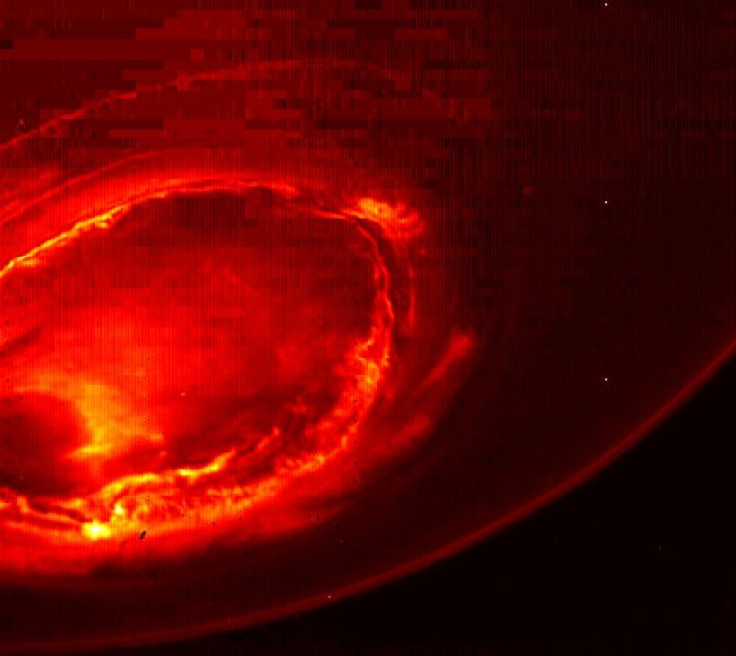NASA Shares Stunning Image Of Clusters Of Cyclones In Jupiter’s North Pole

KEY POINTS
- NASA shared an image of Jupiter's north pole
- The image was captured by the Juno spacecraft
- The infrared image shows hot spots in Jupiter's poles
NASA shared a stunning photo of Jupiter’s north pole taken by its current mission on the gas giant. The infrared photo shows “lava-like” storms forming on the poles of the planet.
The image was captured by the Juno spacecraft, a space probe launched by NASA in 2011 to observe Jupiter from orbit. The agency shared the image through its Instagram page.
Under visible light, Jupiter’s north pole appears to have a bluish color and features traces of storm clouds swirling around in the atmosphere.
“It’s bluer in color up there than other parts of the planet, and there are a lot of storms. There is no sign of the latitudinal bands or zone and belts that we are used to -- this image is hardly recognizable as Jupiter,” Scott Bolton, the principal investigator for the Juno spacecraft, said in a statement.
“We’re seeing signs that the clouds have shadows, possibly indicating that the clouds are at a higher altitude than other features,” he added.
Observing Jupiter’s poles under infrared light provides new information about the planet’s weather activities. NASA managed to capture infrared images of Jupiter using Juno’s Jovian Infrared Auroral Mapper (JIRAM), which was supplied by the Italian Space Agency.
Through this instrument, NASA’s scientists were able to observe the features of Jupiter’s north and south poles in infrared wavelengths. These include the various never-before-seen hot spots in the planet’s atmosphere.
From the images taken using JIRAM, Jupiter’s poles looked like a lava-filled ocean with swirling vortices. NASA noted that the vortices represent the storms or cyclones brewing over the planet’s poles.
“These first infrared views of Jupiter’s north and south poles are revealing warm and hot spots that have never been seen before,” Alberto Adriani, the co-investigator of Juno’s JIRAM instrument, said in a statement.
“And while we knew that the first-ever infrared views of Jupiter's south pole could reveal the planet's southern aurora, we were amazed to see it for the first time,” he continued. “No other instruments, both from Earth or space, have been able to see the southern aurora.”
© Copyright IBTimes 2025. All rights reserved.





















